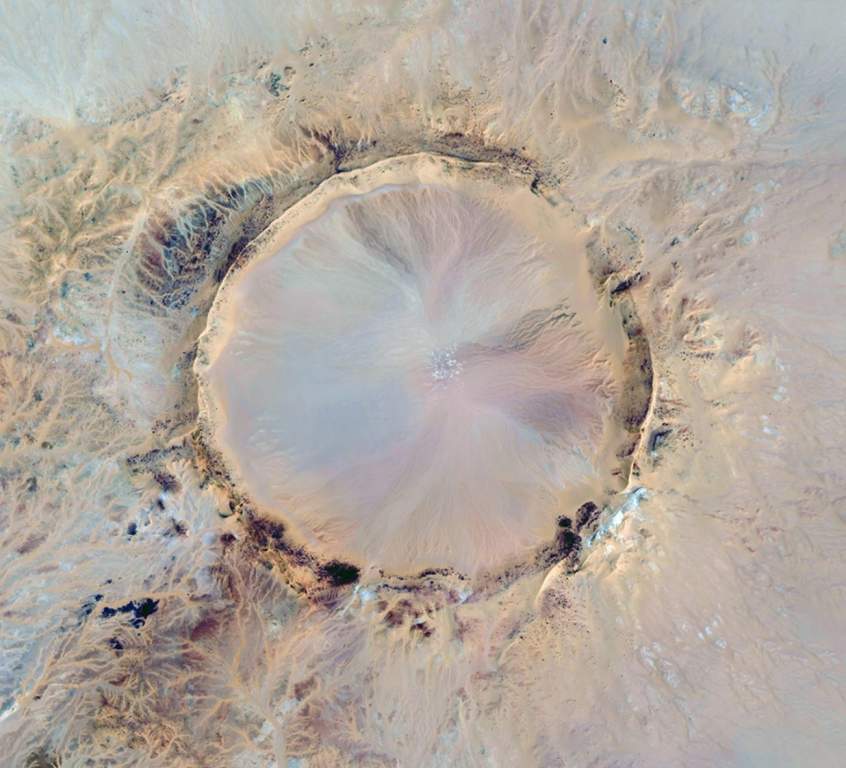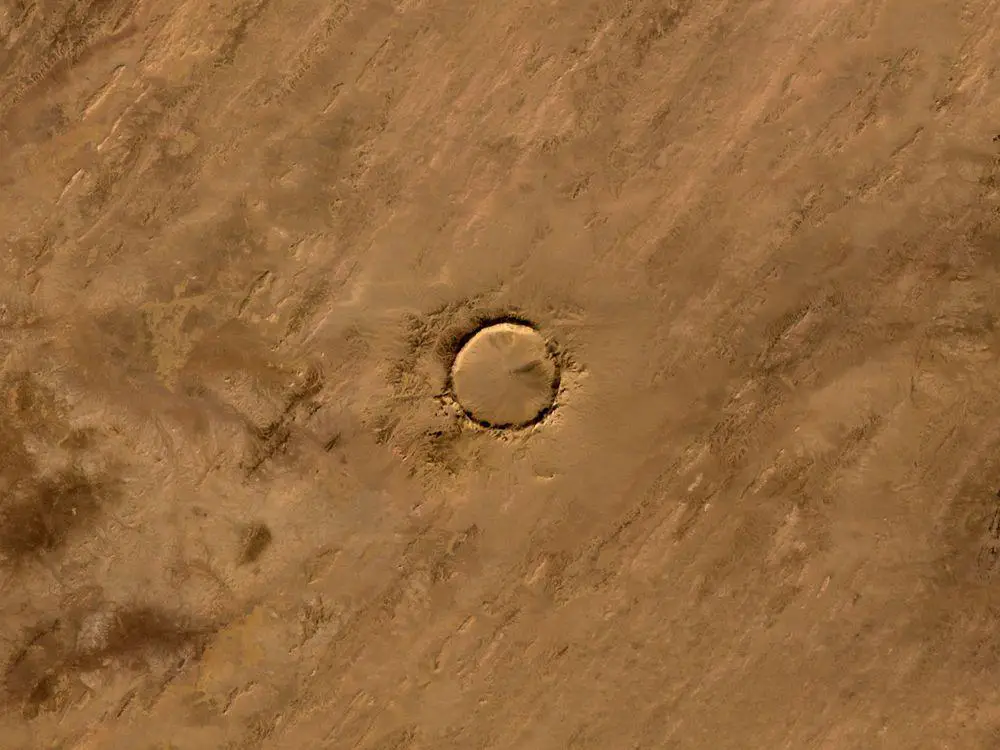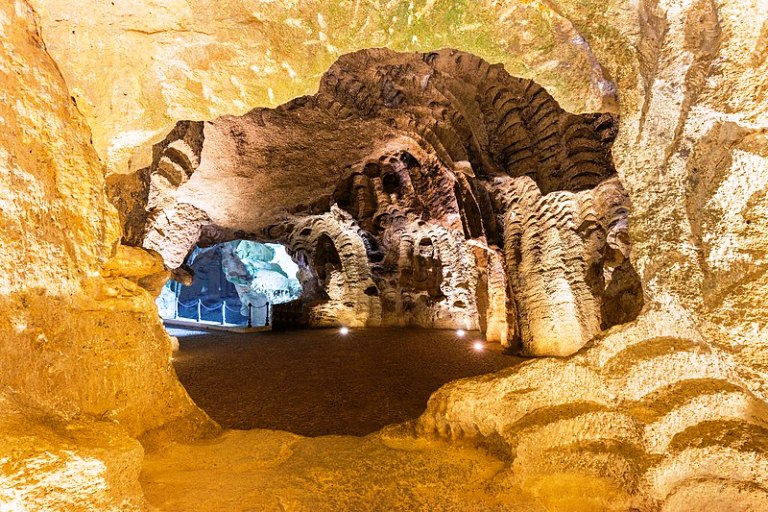There is an astonishing geological formation in the middle of the desolate and arid region of the western Sahara Desert called Tenoumer Crater. The site is located deep within the vast, barren area and has intrigued scientists and geologists for decades, captivating attention due to its almost perfect circular shape.
The Tenoumer crater dimensions span a diameter of about 1.9 kilometers, rising to heights of up to 110 meters above the base. In spite of its momentous elevation, the bottom of the crater is concealed beneath a thick layer of sediments, assessed to be between 200 and 300 meters deep.
The age of Tenoumer Crater is exactly not confirmed. However, scientific debates are a top topic around 21,400 ± 9,700 years. However, in 2016, in different studies, it is believed to be about 1.57 million years old. This revised estimate places its formation within the Pleistocene epoch with the help of major climate changes and geological activity. Tenoumer Crater holds noteworthy substance for the scientific community. Its well-preserved structure provides an exclusive opportunity to study the effects of large impact events on Earth’s surface.
The Tenoumer crater is formed due to a geological landscape composed of ancient gneiss and granite from the Precambrian peneplain, covered with a thin layer of Pliocene sediments. Also, the crater structure is perfectly symmetrical, with steep walls surrounding its circular basin. Moreover, the bottom is blanketed by thick sediments, hiding much of its underlying structure. Investigators analyze the crater’s geological features to understand impact mechanics, such as shock metamorphism and the distribution of ejecta materials.
The Tenoumer Crater origin sparked considerable debate among researchers. Initially, some scientists hypothesized that the crater was of volcanic origin due to the existence of basalt and rhyodacite deposits found outside the crater basin. These volcanic rocks led to the assumption that the Tenoumer crater might have formed from massive volcanic activity.
Though existing geological evidence sturdily supports an impact origin. This inference is based on the finding of shocked basement rocks and minerals characteristically linked with high-pressure impact events. Such beautiful formations are not reliable with volcanic processes but are shared indicators of meteorite impacts.
The crater also contributes to broader research on planetary geology, offering insights into similar impact features found on other planets, such as Mars and the Moon. By comparing Tenoumer with extraterrestrial craters, scientists can gain a better understanding of impact processes throughout the solar system.
The Tenoumer Crater stands as extraordinary evidence of the powerful forces that have shaped our planet’s surface. With its nearly picture-perfect circular form, substantial geological features, and complex history, the crater continues to captivate scientists and researchers worldwide.
Thus, constant studies of this ancient impact site not only improve our understanding of Earth’s geological history but also offer treasured insights into the dynamic processes that shape celestial bodies across the universe.








